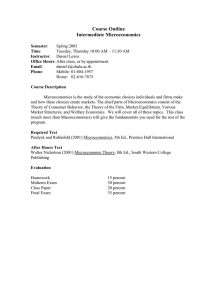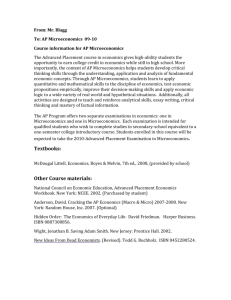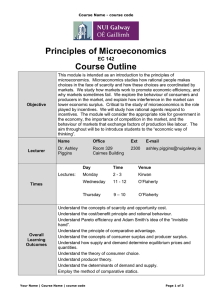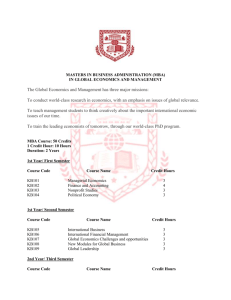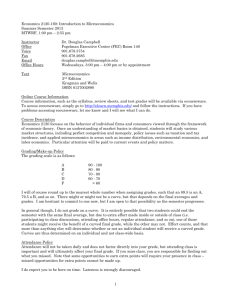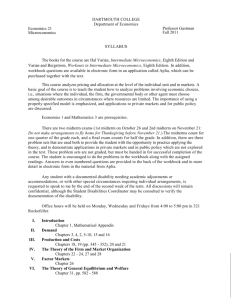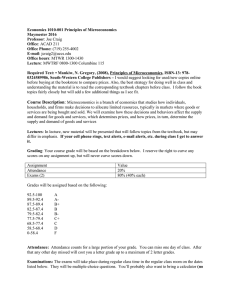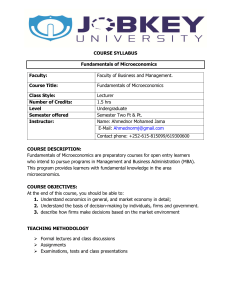AP Microeconomics Course Syllabus - High School
advertisement
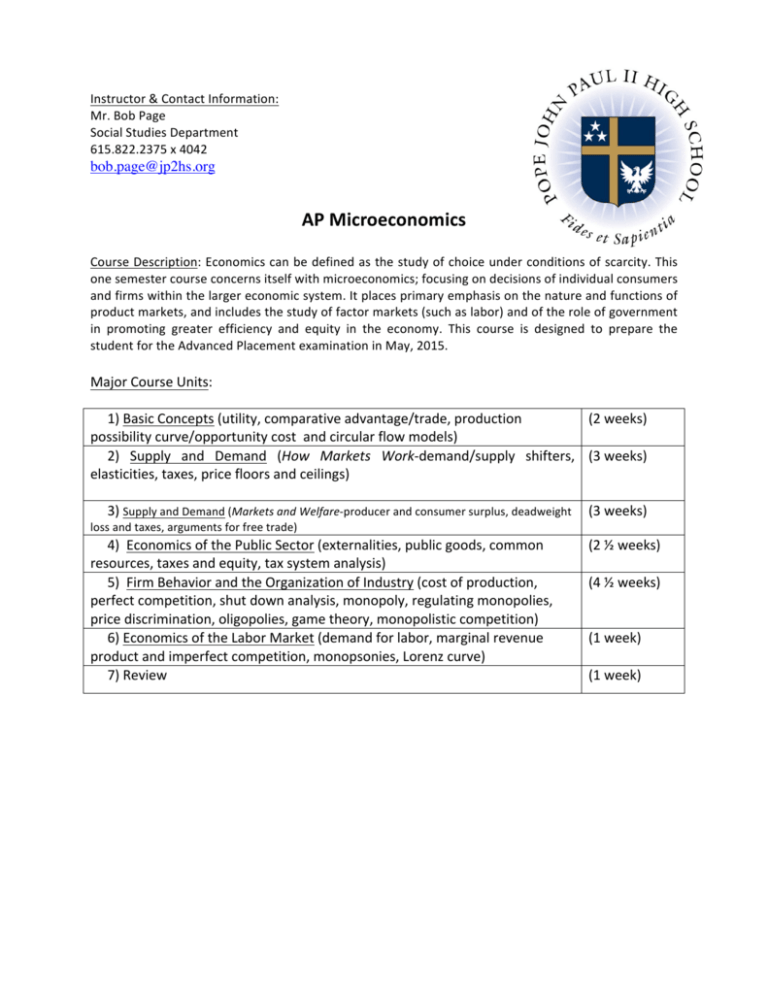
Instructor & Contact Information: Mr. Bob Page Social Studies Department 615.822.2375 x 4042 bob.page@jp2hs.org AP Microeconomics Course Description: Economics can be defined as the study of choice under conditions of scarcity. This one semester course concerns itself with microeconomics; focusing on decisions of individual consumers and firms within the larger economic system. It places primary emphasis on the nature and functions of product markets, and includes the study of factor markets (such as labor) and of the role of government in promoting greater efficiency and equity in the economy. This course is designed to prepare the student for the Advanced Placement examination in May, 2015. Major Course Units: 1) Basic Concepts (utility, comparative advantage/trade, production (2 weeks) possibility curve/opportunity cost and circular flow models) 2) Supply and Demand (How Markets Work-­‐demand/supply shifters, (3 weeks) elasticities, taxes, price floors and ceilings) 3) Supply and Demand (Markets and Welfare-­‐producer and consumer surplus, deadweight (3 weeks) loss and taxes, arguments for free trade) 4) Economics of the Public Sector (externalities, public goods, common resources, taxes and equity, tax system analysis) 5) Firm Behavior and the Organization of Industry (cost of production, perfect competition, shut down analysis, monopoly, regulating monopolies, price discrimination, oligopolies, game theory, monopolistic competition) 6) Economics of the Labor Market (demand for labor, marginal revenue product and imperfect competition, monopsonies, Lorenz curve) 7) Review (2 ½ weeks) (4 ½ weeks) (1 week) (1 week) Type Homework Description Daily preparation for class Assessment Form • Assigned reading-­‐textbook and supplemental readings Approx. Weight 25% from The Economist, New York Times, AP Institute Microeconomics (Dr. Gary Stone), Capstone: Exemplary Lessons for High School Students, Tennessean, etc. Content Quizzes and Simulations Graph Quizzes Unit Tests Quiz where students are asked to complete multiple choice problems based on their reading for class; simulations provided by National Council on Economic Education publications, Capstone, etc. Quiz where students are asked to label/interpret various graphs for this course Multiple choice, Short Answer, Free Response • • • • • • • • • • Workbook pages (Morton) HW problems on Aplia Typically 8-­‐15 multiple choice questions Given nearly every class period Simulations assessed by free response questions on unit test and follow-­‐up activities at time of simulation 15-­‐20% Students will know which graphs will be asked ahead of time Typically 2-­‐3 per semester 5-­‐10% The ability to use knowledge about the content to answer multiple choice style objective questions is one of the important skills in order to be successful in AP courses. Tests will include other types of short answer and/or free response questions There will be 6 Unit Tests for AP Microeconomics 50% Final Exam Mid Term or Final Exam • • • • The Micro Exam will follow the format of the national AP exam This format includes: 60 item Multiple Choice 3 Free Response Questions In its own category, the exams count 20% of the semester grade each term
